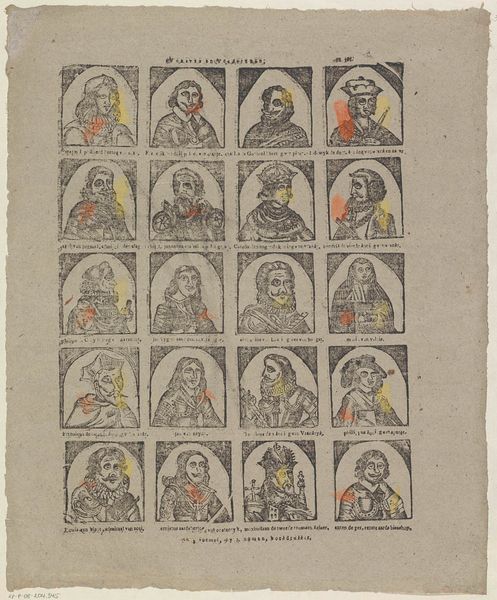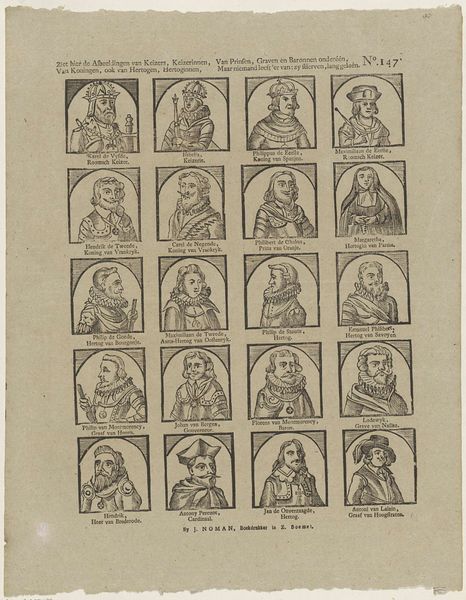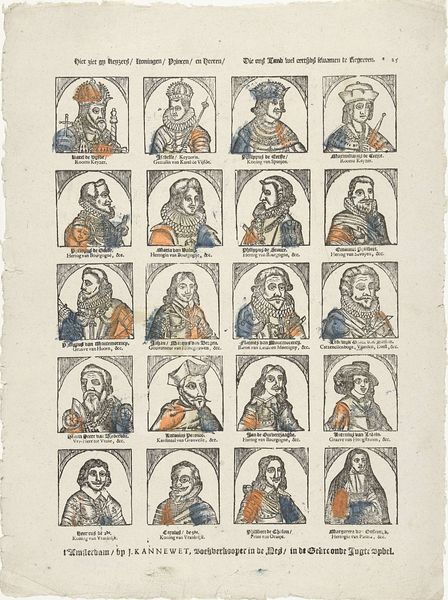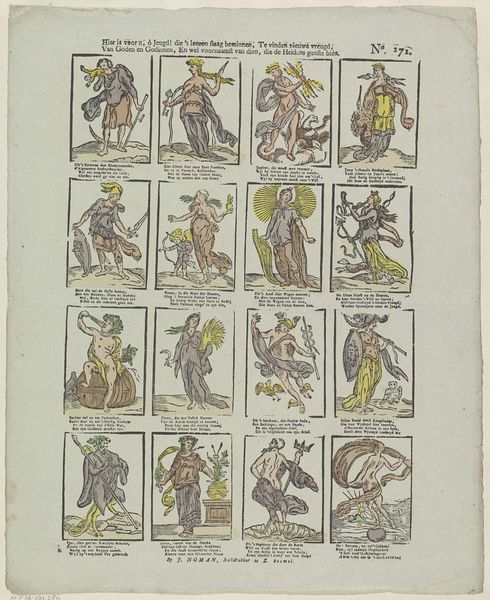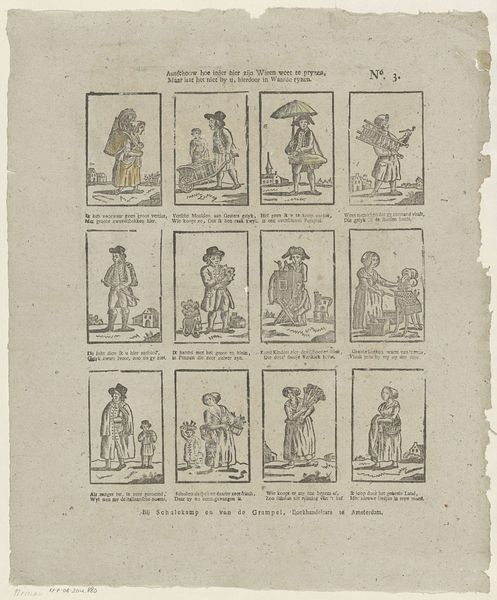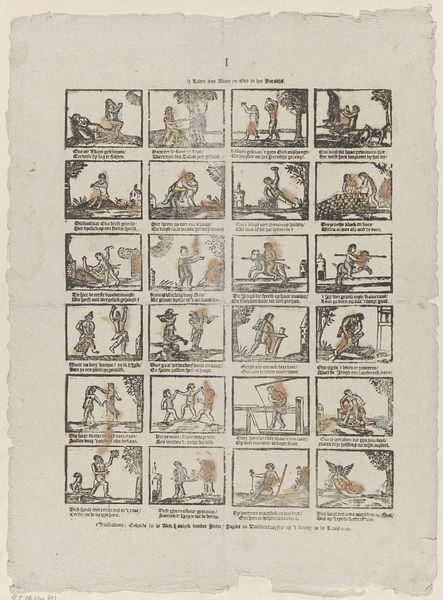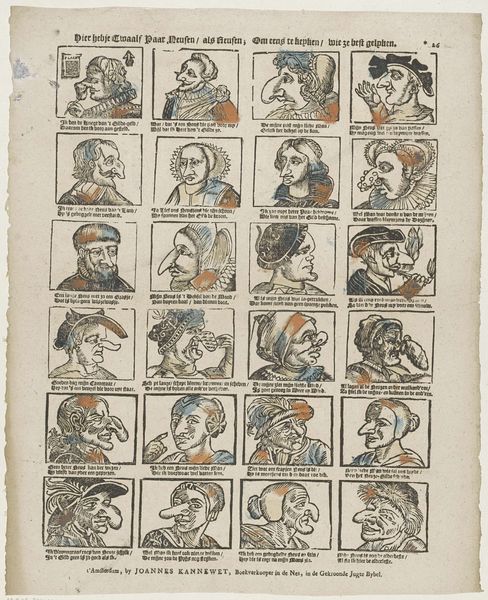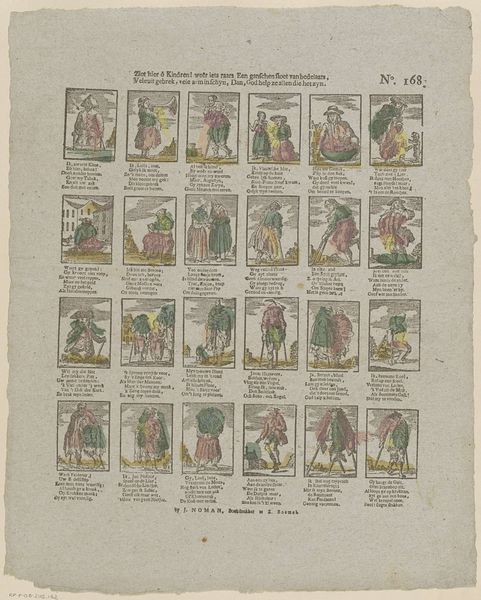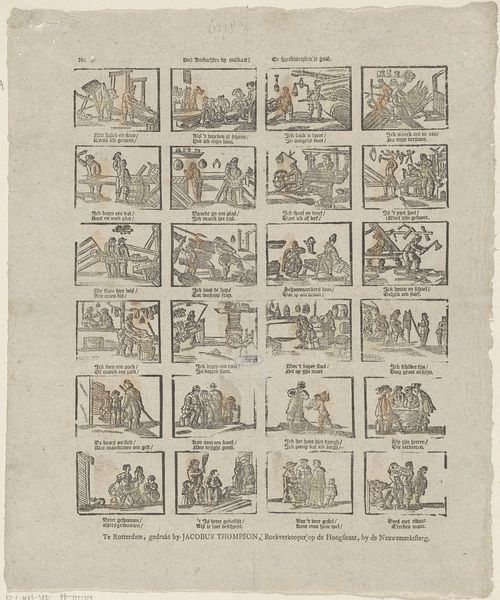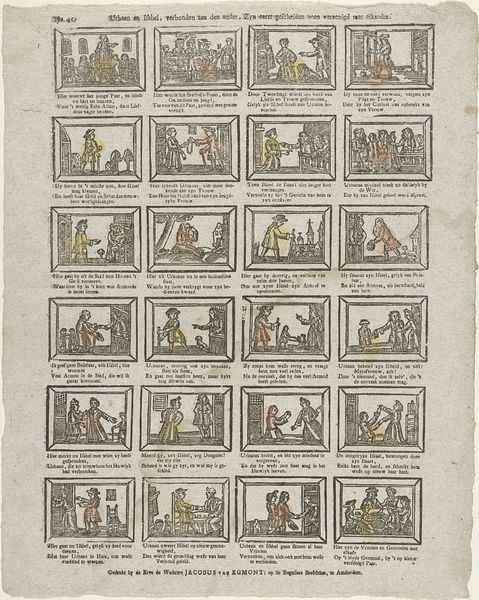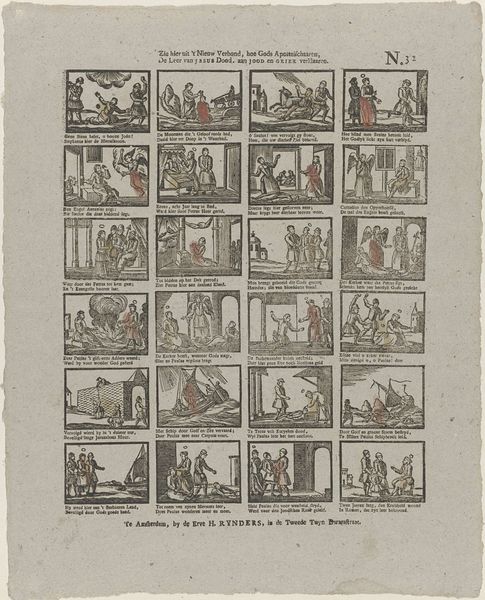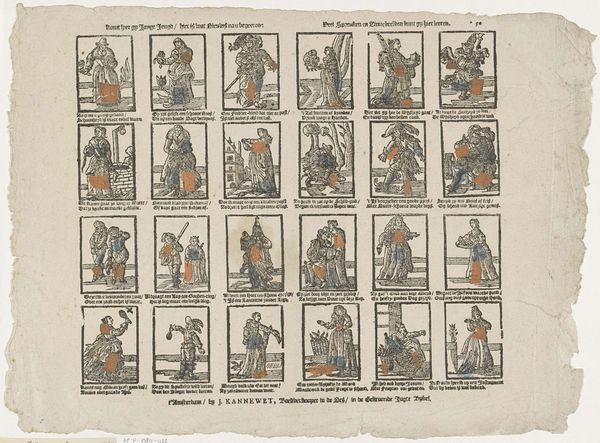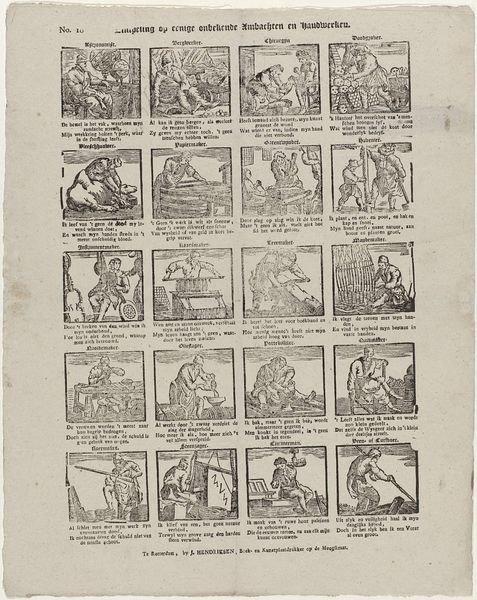
Ziet hier de afbeeldingen van keizers, keizerinnen, / Van koningen, ook van hertogen, hertoginnen, / Van prinsen, graven en baronnen onderéén, / Maar niemand leeft 'er van: zy stierven, langgeleên 1806 - 1830
0:00
0:00
johannoman
Rijksmuseum
Dimensions: height 420 mm, width 333 mm
Copyright: Rijks Museum: Open Domain
Curator: Here we have "Ziet hier de afbeeldingen van keizers, keizerinnen…", or, "Behold here the images of emperors, empresses..." a print made sometime between 1806 and 1830 by Johan Noman. Editor: It has an archaic feel – almost like a carefully preserved family tree, but instead of photographs, we see these hand-drawn portraits encased in frames. A bit like a medieval Zoom call of long-deceased royalty. Curator: Indeed. Let's delve into what makes this print so compelling. The texture and slight discoloration suggest it's an engraving on aged paper, perhaps toned intentionally to amplify the antiquated impression it conveys. Observe how the artist juxtaposes images of rulers alongside a printed text commenting on their collective mortality, suggesting a critical view of authority. Editor: I'm intrigued by the individual depictions of these figures. Their attributes, from crowns to clerical garb, carry strong connotations of power and rank. It strikes me that Noman might be suggesting a deeper symbolism in their appearance. Curator: Consider the materials: printmaking, especially in the Romantic era, offered the opportunity for wider distribution and therefore accessibility. So what might this repetitive printing and disseminating suggest about consumption and labor involved in this production of a matrix of images? Editor: That's interesting. Maybe the arrangement of all the emperors and empresses, arranged so neatly, points toward cultural values, suggesting stability or even a longing for a past era. But then, consider its accessibility, making royalty an almost democratic idea accessible to everyone. It humanizes the unreachable and timeless ideas of leadership, bringing mortality and fragility to the forefront. Curator: Precisely! These framed portraits serve to simultaneously distance and familiarize these historic rulers. And in doing so, this reproduction comments not just on those being displayed, but on what is worthy of our consumption. Editor: So ultimately, while one might initially be drawn to the appearance of historical documentation, the print becomes a reflective piece, a "memento mori," subtly urging reflection. Curator: I concur. An insightful journey it has been into Noman's world. Editor: Indeed, from simple print to cultural document, full of symbolism.
Comments
No comments
Be the first to comment and join the conversation on the ultimate creative platform.
